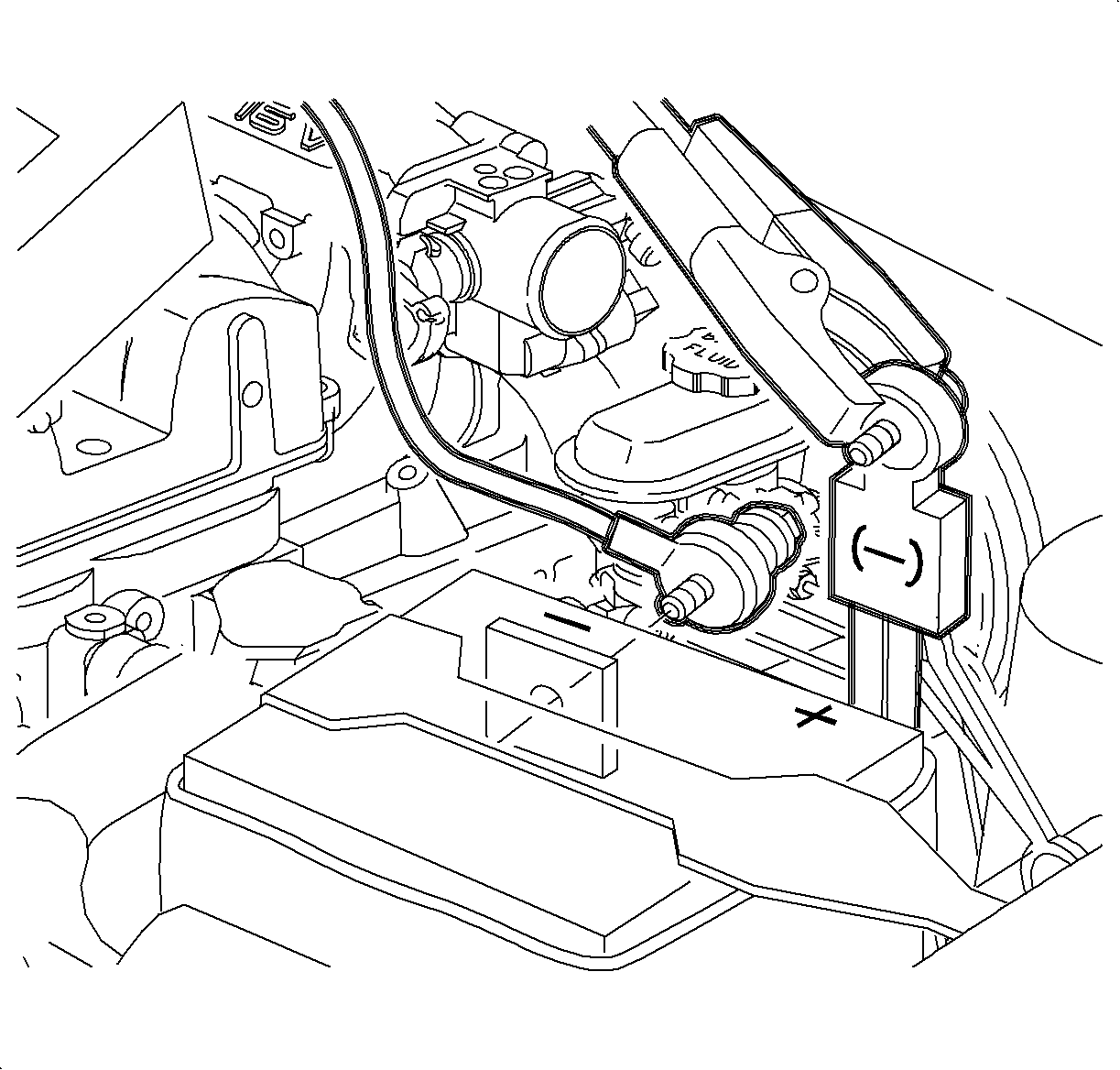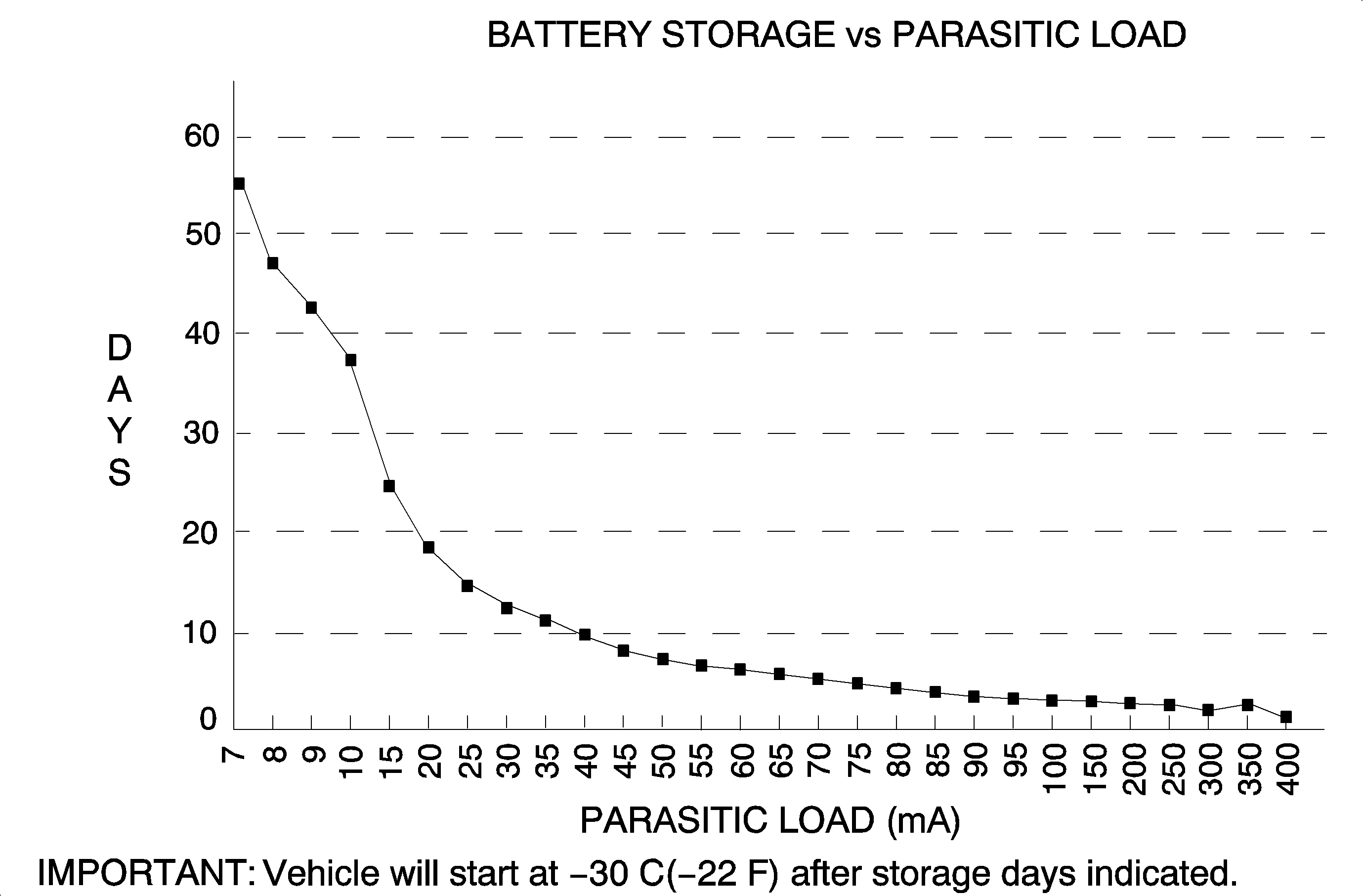Safety Precautions
Parasitic Load Testing
Small current drains, called "parasitic drains," constantly draw current from the battery even with the ignition switch in the OFF position. These parasitic drains can discharge a battery in four to six weeks depending on the battery's state of charge and when the vehicle went into storage.
For normal parasitic current drain refer to individual component parasitic loads. Remember, when checking for parasitic current draw, take a look to see what types of equipment the customer may have had installed on the vehicle. A cellular phone, anti-theft system, or any device added, that requires constant voltage to retain a memory, will draw current at all times. So take these added accessories into account when testing for parasitic current drain.
Saturn Parasitic Load Test Device
The parasitic load test device (SA9130Z) is used with a digital multimeter. The test device is used to measure parasitic current drain from the battery with the ignition and all accessories off. The load tester, constructed with one ohm resistance and built-in circuit protection device, opens when the current exceeds approximately one amp. When the circuit is opened, the user is alerted by a red light-emitting diode (LED) indicator. The parasitic load test device is put into the circuit between the negative battery terminal and the negative battery cable so it effectively becomes a load in series with all other vehicle loads.
Important: The ignition key must be removed from the cylinder before parasitic load testing. The key-minder circuit is activated by the key cylinder switch when the key is in the ignition cylinder, which adds 20 milliamps of current draw.
- Install parasitic load tester between negative cable and negative battery terminal so 1 OHM resister of tester is in series with battery.
- Set multimeter to MILLIVOLT scale.
- Measure current across tester by putting the multimeter probes in two terminals on tester. Reading is obtained in volts. This reading is directly converted to milliamps. Should parasitic load exceed 1 amp, LED indicator on tester will light. This may indicate that a vehicle accessory is On.
- To find the source of excessive load, start removing fuses and modules in a systematic way. When voltage drops across tester, the circuit or circuits protected by that fuse is the source of current drain. Also remove fusible link from generator to check for a voltage drop. If the voltage drop is greater than 2 volts replace the generator. Repair circuit and perform parasitic load test again to verify repair.

Important: Alligator clamp on parasitic load test device must be connected to flat pad part on negative battery cable. Do not connect alligator clamp to bolt on negative battery cable; this will cause incorrect readings.

Parasitic Current Drain Testing With An Ammeter
- Turn ignition and all accessories Off and remove key from ignition switch.
- Disconnect cable from negative battery terminal.
- Follow manufacturers instructions for multimeter or ampmeter being used. This could involve plugging leads into different locations on a multimeter and changing the scale to read amperage. On some testers you should start on the 10 Amp scale setting, and after verifying that current drain is less than two milliamps, set scale to 200 milliamps or 20 milliamps.
- Connect ammeter between negative cable and negative battery terminal so that it is in series. Read parasitic current drain from battery.
- To find the source of excessive load, start removing fuses and modules in a systematic way. When voltage drops across tester, the circuit or circuits protected by that fuse is the source of current drain. Also remove fusible link from generator to check for a voltage drop. If the voltage drop is greater than 2 volts replace the generator. Repair circuit and perform parasitic load test again to verify repair.
Typical Parasitic Loads
Typical parasitic load for this vehicle is 10-15 mA. If vehicle does not have one of the following components, then subtract parasitic load of component for typical parasitic load of vehicle (10-15 mA) to determine parasitic load range for vehicle being tested.
ABS | 1.0 mA |
BCM | 3.0 mA |
CD Changer (refer to *Note below) | 3.0 mA |
ECM/PCM/TCM | 0-1.0 mA |
Generator | 0-1.0 mA |
HVAC Delayed Blower Control | 1.0 mA |
I/P Cluster w/Security Flashing "Security" Telltale | 1.2 mA |
On-Star | 0-1.0 mA |
Radio | 2.8-4.3 mA |
Important: During CD changer initialization, parasitic current draw will fluctuate between 3mA - 1A. The initialization period lasts up to a maximum of 90 seconds. After initialization, the CD changer parasitic current draw will stabilize at approximately 3 mA.
If the CD changer door is open and the light is illuminated, the parasitic current draw will be approximately 65 mA. The light will remain on for 2 minutes. After the light goes out, the CD changer parasitic current draw will stabilize at approximately 3 mA.
TYPICAL UNDESIRED PARASITIC LOADS
| • | Park lamps On |
| • | Headlamps On |
| • | Dome lamp On |
| • | Map lights On |
| • | Cargo lamp On |
| • | Radio On |
| • | Cigar lighter On |

